文章目录
异或运算(^)
性质
- 异或运算满足交换律和结合律
- 二进制异或运算相同为0,不同为1
- 二进制异或运算等同于无进位相加
- 0 ^ N = N, N ^ N = 0
- 数组中两个数交换可以使用异或运算。其中i和j不能相同,不然运算结果为0,但是nums[i]可以等于nums[j]
nums[i] = nums[i] ^ nums[j];
nums[j] = nums[i] ^ nums[j];
nums[i] = nums[i] ^ nums[j];
- 提取一个数中二进制最右边的1,做法:将这个数与他本身取反加一后的结果按位与
int rightOne = eor & (~eor + 1);
leetcode题目
二分法
在一个有序数组中寻找某个数是否存在
- 时间复杂度为O(logN),因为每次数组长度减半
在一个有序数组中找>=某个数最左侧的位置
局部最小
- 无序数组中相邻数一定不相等

对数器(比对数字)
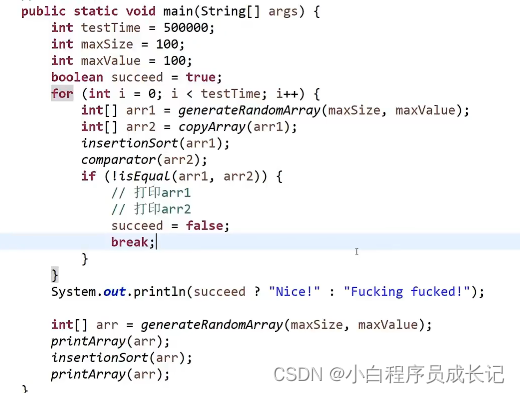
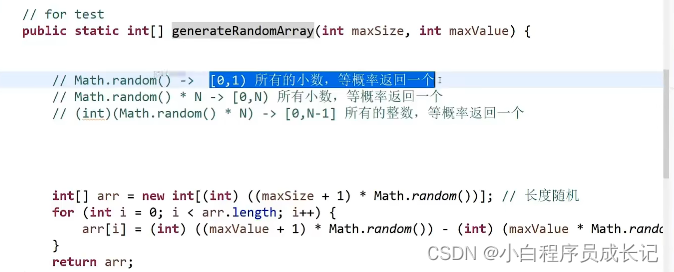
master公式
T(N) = a * T(N / b) + O(N ^ d)
其中logba < d,则时间复杂度为O(N ^d)
logba > d,则时间复杂度为O(N ^ logba)
logba == d,则时间复杂度为O(N ^d * logN)
比较器
public class Comparator_test {
public static void main(String[] args) {
int[] arr = {1, 5, 2, 7, 4, 3, 9};
Integer[] arr1 = {1, 5, 2, 7, 4, 3, 9};
// System.arraycopy(arr, 0, arr1, 0, arr.length);
Arrays.sort(arr);
Arrays.sort(arr1, new arrayComparator());
System.out.println("arr:" + Arrays.toString(arr)); // arr:[1, 2, 3, 4, 5, 7, 9]
System.out.println("arr1:" + Arrays.toString(arr1)); // arr1:[9, 7, 5, 4, 3, 2, 1]
}
public static class arrayComparator implements Comparator<Integer> {
// 如果返回负数,认为第一个参数应该在前面
// 如果返回正数,认为第二个参数应该在前面
// 如果返回0,认为谁在前面都行
@Override
public int compare(Integer a, Integer b) {
return b - a;
}
}
}
排序算法
排序算法稳定性
基于比较的排序中,时间复杂度小于O(NlogN)的没有;时间复杂度为O(NlogN),空间复杂度小于O(N)且保持稳定性的算法没有
- 相同的数保持原有次序
- 选择排序稳定性差
- 冒泡排序稳定性好,相邻元素相同不交换
- 插入排序稳定性好
- 归并排序稳定性好,merge时两个数值相同时,先拷贝右边即可
- 快排稳定性差,partition过程中破坏稳定性
- 堆排序稳定性差
- 基数排序和技术排序稳定性好 (不基于比较的排序稳定性好)

时间复杂度
- 判断算法时间复杂度按照数据最差情况估计的时间复杂度,O表示最差情况
一、插入排序
- 时间复杂度最差为O(N^2),最好为O(N)
class Solution {
public int[] sortArray(int[] nums) {
if (nums.length < 2) return nums;
for (int i = 1; i < nums.length; ++i) {
for (int j = i - 1; j >=0 && nums[j] > nums[j + 1]; --j) {
swap(nums, j, j + 1);
}
}
return nums;
}
public void swap(int[] nums, int i, int j) {
nums[i] = nums[i] ^ nums[j];
nums[j] = nums[i] ^ nums[j];
nums[i] = nums[i] ^ nums[j];
}
}
class Solution {
public int[] sortArray(int[] nums) {
if (nums.length < 2) return nums;
for (int i = 0; i < nums.length - 1; ++i) {
int sortedIndex = i;
int currValue = nums[sortedIndex + 1];
while (sortedIndex >= 0 && currValue < nums[sortedIndex]) {
nums[sortedIndex + 1] = nums[sortedIndex];
sortedIndex--;
}
nums[sortedIndex + 1] = currValue;
}
return nums;
}
}
二、归并排序
- 时间复杂度O(NlogN),空间复杂度O(N)
public class solution {
public static void main(String[] args) {
int[] array = {10,199, 2, 32, 41, 15, 22, 75, 140};
mergeSort(array);
System.out.println(Arrays.toString(array));
}
public static void mergeSort(int[] arr) {
int left = 0;
int right = arr.length - 1;
process(arr, left, right);
}
public static void process(int[] arr, int left, int right) {
if (left == right) return;
int mid = left + ((right - left) >> 1 );
process(arr, left, mid);
process(arr, mid + 1, right);
merge(arr, left, mid, right);
}
public static void merge(int[] arr, int left, int mid, int right) {
int[] temp = new int[right - left + 1];
int i = 0;
int p1 = left;
int p2 = mid + 1;
while (p1 <= mid && p2 <= right) {
temp[i++] = arr[p1] <= arr[p2] ? arr[p1++] : arr[p2++];
}
while (p1 <= mid) {
temp[i++] = arr[p1++];
}
while (p2 <= right) {
temp[i++] = arr[p2++];
}
for (int j = 0; j < temp.length; j++) {
arr[left + j] = temp[j];
}
}
}
leetcode题目
题目
- 求最大值
public class solution {
public static void main(String[] args) {
int[] array = {10,199, 2, 32, 41, 15, 22, 75, 140};
int ans = getMax(array);
System.out.println(ans);
}
public static int getMax(int[] arr) {
return process(arr, 0, arr.length - 1);
}
public static int process(int[] arr, int left, int right) {
if (left == right) return arr[left];
int mid = left + ((right - left) >> 1);
return Math.max(process(arr, left, mid), process(arr, mid + 1, right));
}
}
- 小和问题
- 与传统merge算法区别在于左组的数等于右组时不产生小和,且把右组的数写入temp数组中

public class solution {
public static void main(String[] args) {
int[] array = {10,199, 2, 32, 41, 15, 22, 75, 140};
int ans = getSmallSum(array);
System.out.println(Arrays.toString(array));
System.out.println(ans);
}
public static int getSmallSum(int[] arr) {
int left = 0;
int right = arr.length - 1;
int ans = process(arr, left, right);
return ans;
}
public static int process(int[] arr, int left, int right) {
if (left == right) return 0;
int mid = left + ((right - left) >> 2);
return process(arr, left, mid) + process(arr, mid + 1, right) + merge(arr, left, mid, right);
}
public static int merge(int[] arr, int left, int mid, int right) {
int[] temp = new int[right - left + 1];
int i = 0;
int p1 = left;
int p2 = mid + 1;
int sum = 0;
while (p1 <= mid && p2 <= right) {
sum += arr[p1] < arr[p2] ? (right - p2 + 1) * arr[p1] : 0;
temp[i++] = arr[p1] < arr[p2] ? arr[p1++] : arr[p2++];
}
while (p1 <= mid) {
temp[i++] = arr[p1++];
}
while (p2 <= right) {
temp[i++] = arr[p2++];
}
for (int j = 0; j < temp.length; ++j) {
arr[left + j] = temp[j];
}
return sum;
}
}
- 逆序对

三、快速排序
- 时间复杂度O(N * logN),空间复杂度最差o(N),最好O(logN)
public class QuickSort {
public static void main(String[] args) {
int[] array = {5, 1, 1, 2, 0, 0};
int[] ans = quictSort(array);
System.out.println(Arrays.toString(ans));
}
public static int[] quictSort(int[] array) {
sort(array, 0, array.length - 1);
return array;
}
public static void sort(int[] arr, int left, int right) {
if (left < right) {
// 随机选取一个数作为分割点,这样避免每次都最坏分割点产生,整体时间复杂度可达O(NlogN)
swap(arr, left + (int)(Math.random() * (right - left + 1)), right);
int[] p = partition(arr, left, right);
sort(arr, left, p[0] - 1);
sort(arr, p[1] + 1, right);
}
}
public static int[] partition(int[] arr, int left, int right) {
int less = left - 1; // 小于区域的右边界
int more = right; // 大于区域的左边界
while (left < more) { // left为当前元素位置,right为参考元素位置
if (arr[left] < arr[right]) {
// 当当前元素小于参考元素时,将当前元素和小于区域右边第一个数交换,i++
swap(arr, ++less, left++);
}else if (arr[left] > arr[right]) {
// 当当前元素大于参考元素时,将当前元素和大于区域的左边第一个数交换,i不变
swap(arr, --more, left);
}else {
// 当当前元素等于参考元素时,i++
left++;
}
}
// 由于最后一个元素为参考元素始终没有移动,故在最后将其移动至等于区域的最后一位即大于区域的第一位,所以等于区域的边界变为less + 1和more
swap(arr, more, right);
return new int[]{less + 1, more};
}
public static void swap(int[] array, int temp, int end) {
int val = array[temp];
array[temp] = array[end];
array[end] = val;
}
}
四、堆排序
堆结构
- 堆结构是用数组实现的完全二叉树结构
- 堆结构用heapInsert和heapify两种操作
- 优先级队列结构就是堆结构
- 完全二叉树包含满二叉树
- 完全二叉树:
- 左孩子:2 * i + 1
- 右孩子:2 * i + 2
- 父:(i - 1) / 2
- 完全二叉树高度:logN + 1
- 堆是完全二叉树,大根堆即以某个节点为根节点的二叉树的最大值为该根节点,小根堆同理
堆排序code
- 时间复杂度O(NlogN),空间复杂度O(1)
public class heap_operate {
public static void main(String[] args) {
int[] array = {10, 199, 2, 32, 41, 15, 22, 75, 140};
heapSort_v2(array);
System.out.println(Arrays.toString(array));
}
public static void heapSort_v2(int[] arr) {
if (arr == null || arr.length < 2) return;
// 共N次循环,每次是O(logN)时间,故为NlogN
for (int i = 0; i < arr.length; ++i) {
heap_insert(arr, i);
}
// for (int i = 0; i < arr.length; --i) {
// heapify(arr, i, arr.length);
// } // 时间为O(N),比上面的方法更快变为大根堆,但是总时间复杂度不变仍为O(NlogN)
int heapSize = arr.length;
swap(arr, 0, --heapSize);
while (heapSize > 0) {
heapify(arr, 0, heapSize);
swap(arr, 0, --heapSize);
}
}
public static void heap_insert(int[] arr, int index){
while (arr[index] > arr[(index - 1) / 2]) {
swap(arr, index, (index - 1) / 2);
index = (index - 1) / 2;
}
}
public static void heapify(int[] arr, int index, int heapsize){
int left = index * 2 + 1;
while (left < heapsize) {
int largest = left + 1 < heapsize && arr[left + 1] > arr[left] ? left + 1 : left;
largest = arr[largest] > arr[index] ? largest : index;
if (largest == index) break;
swap(arr, largest, index);
index = largest;
left = index * 2 + 1;
}
}
public static void swap(int[] arr, int left, int right){
arr[left] = arr[left] ^ arr[right];
arr[right] = arr[left] ^ arr[right];
arr[left] = arr[left] ^ arr[right];
}
}
堆排序题目

public class Solution {
public static void main(String[] args) {
int[] arr = {6, 1, 3, 10, 2, 6, 3 , 8, 13, 9};
sortedArrDistanceLessK(arr, 6);
System.out.println(Arrays.toString(arr));
}
public static void sortedArrDistanceLessK(int[] arr, int k) {
PriorityQueue<Integer> heap = new PriorityQueue<>();
int index = 0;
for (; index <= Math.min(arr.length - 1, k); index++) {
heap.add(arr[index]);
}
int i = 0;
for (; index < arr.length; i++, index++) {
heap.add(arr[index]);
arr[i] = heap.poll();
}
while(!heap.isEmpty()) {
arr[i++] = heap.poll();
}
}
}
五、基数排序
基数排序code
public class RadixSort_v2 {
public static void main(String[] args) {
int[] array = {10,199, 2, 32, 41, 15, 22, 75, 140};
radixSortV2(array);
System.out.println(Arrays.toString(array));
}
public static void radixSortV2(int[] arr) {
if (arr == null || arr.length < 2) return;
radixSortV2(arr, 0, arr.length - 1, maxbits(arr));
}
public static int maxbits(int[] arr) {
int max = Integer.MIN_VALUE;
for (int i = 0; i < arr.length; ++i) {
max = Math.max(max, arr[i]);
}
int res = 0;
while (max != 0) {
res++;
max /= 10;
}
return res;
}
public static void radixSortV2(int[] arr, int left, int right, int digit) {
final int radix = 10;
int i = 0, j = 0;
int[] bucket = new int[right - left + 1];
for (int d = 1; d <= digit; ++d) {
int[] count = new int[radix];
for (i = left; i <= right; ++i) {
j = getDigit(arr[i], d);
count[j]++;
}
for (i = 1; i < radix; ++i) {
count[i] = count[i] + count[i - 1];
}
for (i = right; i >= left; --i) {
j = getDigit(arr[i], d);
bucket[count[j] - 1] = arr[i];
count[j]--;
}
for (i = left, j = 0; i <= right; ++i, ++j) {
arr[i] = bucket[j];
}
}
}
public static int getDigit(int x, int d) {
return ((x / ((int)Math.pow(10, d - 1))) % 10);
}
}
哈希表
- 哈希表使用层面上是一种集合结构
- 如果只有key没有伴随数据value,可以使用HashSet,如果有value,使用HashMap
- 有无伴随数据时HashMap和HashSet唯一的区别,底层的实际结构是一回事
- 哈希表增删改查(set:add, remove, contains; map: put, remove, put, containsKey, get)操作时间复杂度为O(1),但是常数时间比较大
- 放入哈希表的东西,如果是基础类型,内部按值传递,内存占用就是这个东西的大小
- 放入哈希表的东西,如果不是基础类型,内部按引用传递,内存占用是这个东西内存地址的大小
有序表
- 有序表在使用层面上是一种集合结构
- java中时TreeSet和TreeMap
- 所有操作为时间复杂度为 O(logN)
- 常用操作:
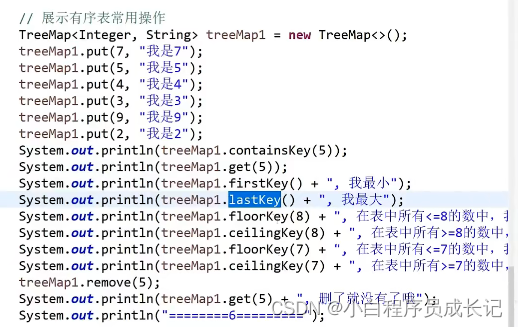
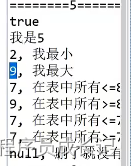
单链表和双链表
重要技巧:
- 额外数据结构记录,如哈希表,栈,队列
- 快慢指针(可以找到链表中点)
- 判断单个链表是否有环,如果有返回第一个入环节点。
- 方法一:设置一个快指针在head.next.next,一个慢指针在head.next,快指针一次走两步,慢指针一次走一步,第一次相遇后,将快指针重新置于head处,然后两个指针每次走一步,则相遇点为环形链表第一个入环节点
- 方法二:使用hashset,每次遍历一个节点,先判断set中是否存在该节点,如果存在则为第一个入环节点
题目
- 反转链表
- 回文链表
- 将单链表划分区域

- 复制含有随机指针节点的链表leetcode138
- 单链表相交问题

- 两个无环链表剑指offer-52
- 一个有环一个无环两链表不可能相交
- 两个有环节点
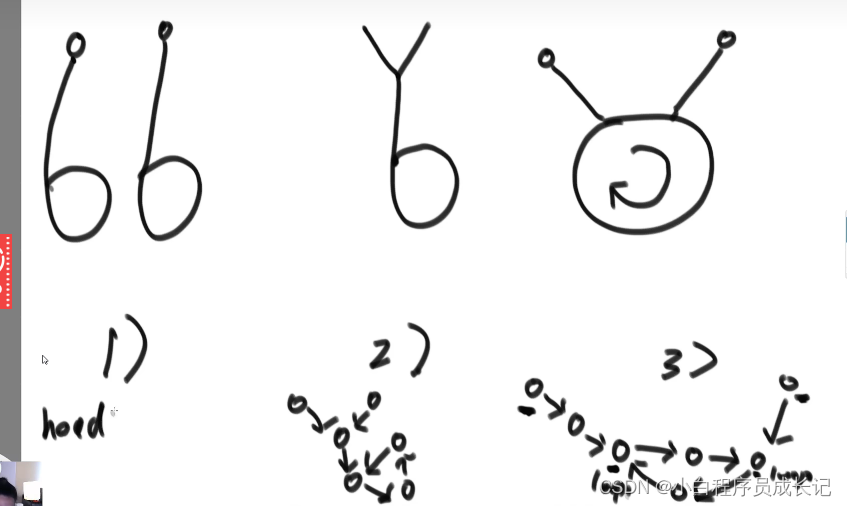
public static Node bothLoop(Node head1, Node loop1, Node head2, Node loop2) {
Node cur1 = null;
Node cur2 = null;
if (loop1 == loop2) {
cur1 = head1;
cur2 = head2;
int n = 0;
// 同两无环链表找交点问题,先走差值,以入环点为终点
while (cur1 != loop1) {
n++;
cur1 = cur1.next;
}
while (cur2 != loop2) {
n--;
cur2 = cur2.next;
}
cur1 = n > 0 ? head1 : head2;
cur2 = cur1 == head1 ? head2 : head1;
n = Math.abs(n);
while (n != 0) {
n--;
cur1 = cur1.next;
}
while (cur1 != cur2) {
cur1 = cur1.next;
cur2 = cur2.next;
}
return cur1;
}else {
cur1 = loop1.next;
while (cur1 != loop1) {
if (cur1 == loop2) {
return loop1;
}
cur1 = cur1.next;
}
return null;
}
}
二叉树
前序遍历(深度优先遍历)(中左右)
- 递归
- 迭代
- 从栈中弹出一个节点
- 处理该节点(打印)
- 先右后左(如果有的话)
- 循环周而复始
class Solution {
public List<Integer> preorderTraversal(TreeNode root) {
List<Integer> ans = new ArrayList<Integer>();
if (root == null) return ans;
Deque<TreeNode> dq = new ArrayDeque<TreeNode>();
dq.offer(root);
while (!dq.isEmpty()) {
TreeNode tn = dq.pollLast();
ans.add(tn.val);
if (tn.right != null) dq.offer(tn.right);
if (tn.left != null) dq.offer(tn.left);
}
return ans;
}
}
中序遍历
- 迭代
- 每颗子树,整棵树左边界进栈
- 依次弹出的过程中对弹出节点处理(打印)
- 对弹出节点的右树周而复始
class Solution {
public List<Integer> inorderTraversal(TreeNode root) {
List<Integer> ans = new ArrayList<Integer>();
if (root == null) return ans;
Deque<TreeNode> dq = new ArrayDeque<TreeNode>();
while (!dq.isEmpty() || root != null) {
if (root != null) {
dq.offer(root);
root = root.left;
}else {
root = dq.pollLast();
ans.add(root.val);
root = root.right;
}
}
return ans;
}
}
后序遍历(左中右)
- 迭代
- 从主栈中弹出一个节点
- 把该节点放入收集栈中
- 然后先左后右
- 周而复始
class Solution {
public List<Integer> postorderTraversal(TreeNode root) {
List<Integer> ans = new ArrayList<Integer>();
if (root == null) return ans;
Deque<TreeNode> mainDq = new ArrayDeque<TreeNode>();
Deque<TreeNode> collectDq = new ArrayDeque<TreeNode>();
mainDq.offer(root);
while (!mainDq.isEmpty()) {
TreeNode node = mainDq.pollLast();
collectDq.offer(node);
if (node.left != null) mainDq.offer(node.left);
if (node.right != null) mainDq.offer(node.right);
}
while (!collectDq.isEmpty()) {
ans.add(collectDq.pollLast().val);
}
return ans;
}
}
层序遍历(宽/广度优先遍历)
- 使用队列
class Solution {
public List<List<Integer>> levelOrder(TreeNode root) {
List<List<Integer>> ans = new ArrayList<List<Integer>>();
if (root == null) return ans;
Deque<TreeNode> dq = new ArrayDeque<TreeNode>();
dq.add(root);
while (!dq.isEmpty()) {
int size = dq.size();
List<Integer> list = new ArrayList<Integer>();
while (size != 0) {
TreeNode node = dq.poll();
list.add(node.val);
size--;
if (node.left != null) dq.offer(node.left);
if (node.right != null) dq.offer(node.right);
}
ans.add(list);
}
return ans;
}
}
搜索二叉树
- 每一棵树都是左树比根节点小,右树大于根节点,即中序遍历为升序
满二叉树
- 深度为L,节点个数为N,则N = 2 ^ L - 1
题目
- 二叉树宽度
- 验证二叉搜索树
- 平衡二叉树
- 满二叉树
- 完全二叉树
- 最低公共祖先(是否为BST)
- 二叉树找一个节点的后继节点
- 二叉树序列化和反序列化
- 折纸问题 微软面试题
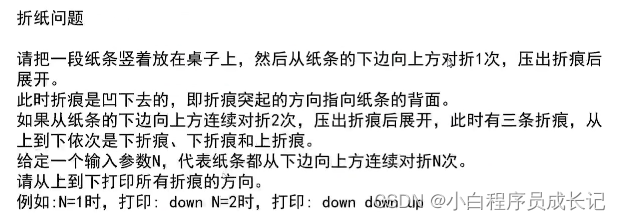
public class Solution {
public void printAllFolds(int N) {
// down为true时为凹折痕,false时为凸折痕
printFolds(1, N, true);
}
// 打印折痕为中序遍历
public void printFolds(int i, int N, boolean down) {
if (i > N) return;
printFolds(i + 1, N, true);
System.out.println(down ? "凹" : "凸");
printFolds(i + 1, N, false);
}
}
图
基本类
- 在笔试中遇到时将所给图结构转为自己的结构,相当于笔试中只写转换接口
- Graph:图有点集和边集
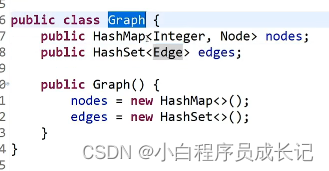
- Edge:边有权重和来去的点

- Node:点有自己的值和出度入度,还有指向的点以及out的边
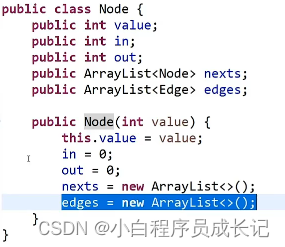
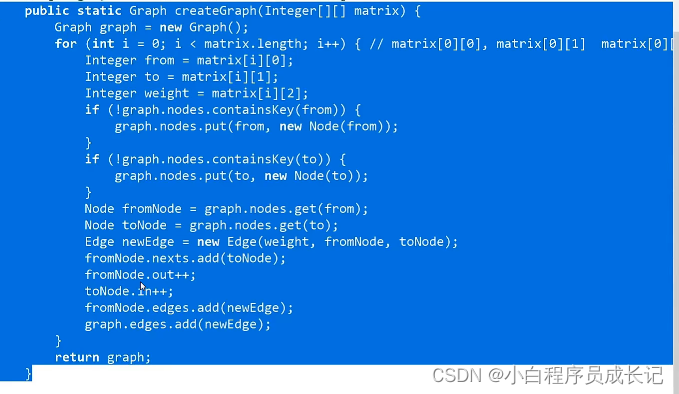
题目
- 图的宽度优先遍历(相当于二叉树的层序遍历)
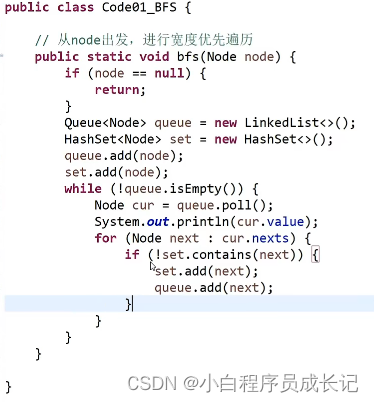
- 图的深度优先遍历
- 迭代 用栈模拟

- 拓扑排序

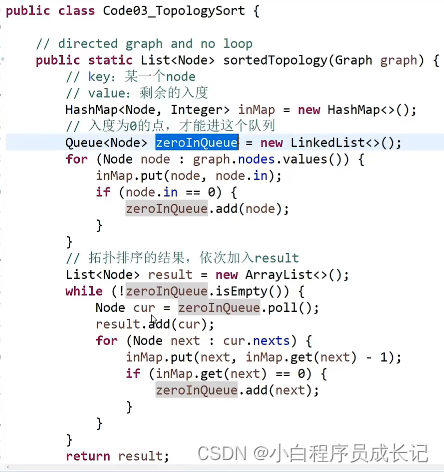
4. Kruskal算法
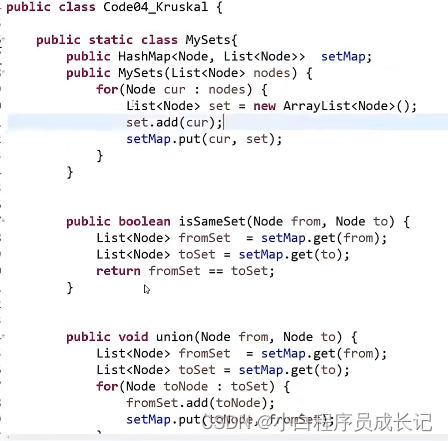
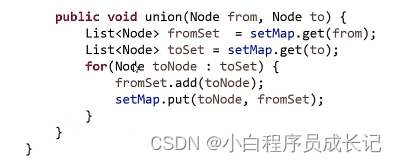
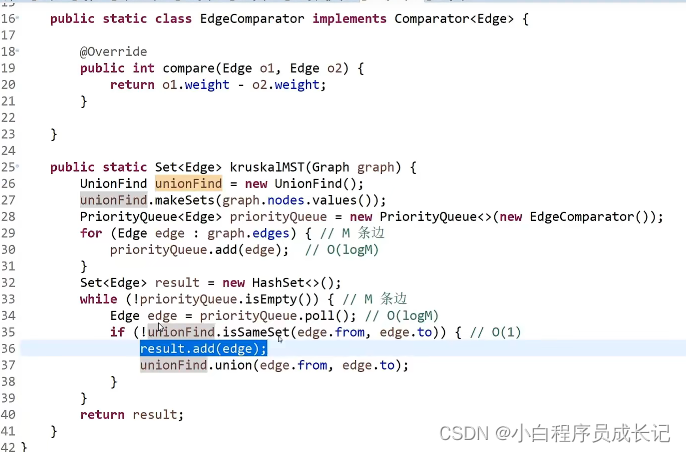





















 390
390











 被折叠的 条评论
为什么被折叠?
被折叠的 条评论
为什么被折叠?








